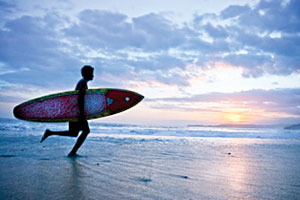Into the Hinterland-from Waikabubak to Wanokaka
Tuesday, June 7, 2016
The flight from Sumbawa disgorged a planeload of small businessmen, missionary families with young children, a few white-veiled nuns, a smattering of French and Dutch tourists, two Australian surfers and myself onto the tarmac of West Sumba's Tambolaka airport. We rode through a dry countryside of steepled churches atop hills, fields of galloping horses, clusters of stone slab graves, roofs of riotous bougainvillea blossoms, and rows of scraggly shops and squealing pigs being loaded into pickup trucks. In the late 1990s, I remember seeing loin-clothed wild pig hunters carrying spears along the road with their dogs, but not this time.
The landscape is still raw and relatively unpeopled-no factories, no billboards, no supermarkets-just gardens and country farmers markets. Sumba's famous top-hat alang-alang (thatch)-roofed traditional wooden dwellings are relentlessly being phased out and replaced by cinder-block buildings that cost considerably less to build. Like the rumah adat (traditional house), horses as transport are also being replaced by a dramatic proliferation of Japanese motorbikes. Cables creeping out from under grass roofs lead to meter-wide satellite dishes. People's calm reaction and behavior indicate that they are getting used to tourists.
arsip tempo : 171412115467.

The flight from Sumbawa disgorged a planeload of small businessmen, missionary families with young children, a few white-veiled nuns, a smattering of French and Dutch tourists, two Australian surfers and myself onto the tarmac of West Sumba's Tambolaka airport. We rode through a dry countryside of steepled churches atop hills, fields of galloping horses, clusters of stone slab graves, roofs of riotous bougainvillea blossoms, and rows of scraggly s
...
Subscribe to continue reading.
We craft news with stories.
 For the benefits of subscribing to Digital Tempo, See More
For the benefits of subscribing to Digital Tempo, See More








